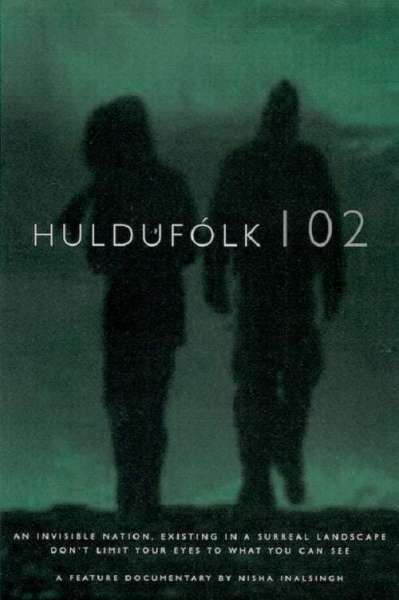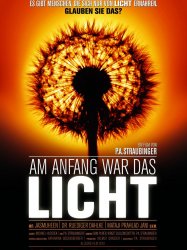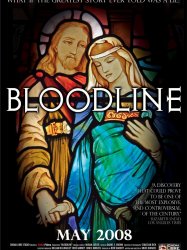Huldufólk 102 is a film
Huldufólk 102 (2006)

If you like this film, let us know!
- Infos
- Casting
- Technical infos
- Photos
- Videos
- Film quotes
- Characters
- Music
- Awards
Huldufólk 102 is a 2006 American/Icelandic co-production documentary film directed by Nisha Inalsingh about the cultural phenomenon of the Huldufólk (or "hidden folk"), mystical beings traditionally believed by many Icelanders to inhabit a parallel world hidden in the rocks and stones of the harsh Icelandic landscape.
Comments
Leave comment :
Suggestions of similar film to Huldufólk 102
There are 16 films with the same themes, to have finally 16 suggestions of similar films.If you liked Huldufólk 102, you will probably like those similar films :
 , 1h35
, 1h35Origin Austria
Genres Documentary
Themes Documentary films about the paranormal
Rating60%





P.A. Straubinger first encounters inedia in a television documentary about Nicholas of Flüe, a 15th-century ascetic who was reported to have lived 19 years without eating. Later, Straubinger starts research on the internet and subsequently has the desire to meet people practising inedia. He travels through different countries and interviews people who claim to nourish themselves with light, vitality, Prana or Qi, among them Jasmuheen, Michael Werner and "Mataji" Prahlad Jani. Straubinger also consults different people from classical and alternative medicine and science and looks for explanatory models for inedia. Straubinger conveys that for him, the materialistic world view of modern science falls short.
 , 2h
, 2hOrigin USA
Genres Documentary
Themes Documentary films about the paranormal
Actors Peter Jennings
Rating72%





 , 1h
, 1hGenres Documentary
Themes Documentary films about the paranormal
Actors Lance Henriksen, Stacy Keach
Rating72%






The Possessed (2009)
, 1h20Origin USA
Genres Thriller, Documentary, Horror
Themes Documentary films about the paranormal, Ghost films
Rating44%





The movie is based upon the events surrounding what became known as the 'Watseka Wonder'. Using period photographs, dramatic recreations, and interviews with subject experts, it addresses what is allegedly the first well-documented and recorded spirit possession story in America of 1877, and the subsequent recorded "possessions" suffered by Lurancy.

Act of God (2009)
, 1h16Directed by Jennifer Baichwal
Origin Canada
Genres Documentary
Themes Documentary films about the paranormal
Actors Paul Auster, Fred Frith
Rating50%






Bloodline (2008)
Directed by Bruce Burgess
Origin USA
Genres Documentary
Themes Films about religion, Documentary films about the paranormal, Documentary films about religion, Films based on the Bible, Portrayals of Jesus in film
Actors Bruce Burgess
Rating56%





 , 1h52
, 1h52Directed by Auguste Lumière
Origin USA
Genres Comedy, Documentary, Action
Themes Documentary films about historical events, Documentary films about the paranormal
Rating68%





Un grand nombre de personnes se battent à coups de boules de neige. Au milieu de cette mêlée, survient un cycliste sur lequel tout le monde lance des boules et finit par tomber de son vélo. Il se relève, s’esquive vivement avec sa bicyclette et la bataille reprend de plus belle.

Out of the Blue (2002)
Directed by James Fox
Genres Science fiction, Documentary, Historical
Themes Documentary films about the paranormal
Actors Peter Coyote
Rating73%





Ce documentaire sur le phénomène OVNI vise à montrer que certains ovnis peuvent être extraterrestres et que le secret et le ridicule sont régulièrement utilisés pour garder la vérité sur les ovnis cachée.

Bells from the Deep (1993)
, 1hDirected by Werner Herzog
Origin German
Genres Documentary
Themes Films about religion, Documentary films about the paranormal, Documentary films about religion
Actors Werner Herzog
Rating72%





Les Cloches des profondeurs est un documentaire d'investigation du réalisateur allemand Werner Herzog sur le mysticisme en Russie. Il est composé de plusieurs sous-parties, annoncées par des chapitres. Schématiquement, la première moitié du documentaire est consacrée aux guérisseurs religieux russes, tandis que la seconde partie s'intéresse de plus près à la légende de la cité perdue de Kitej.
 Connection
Connection
